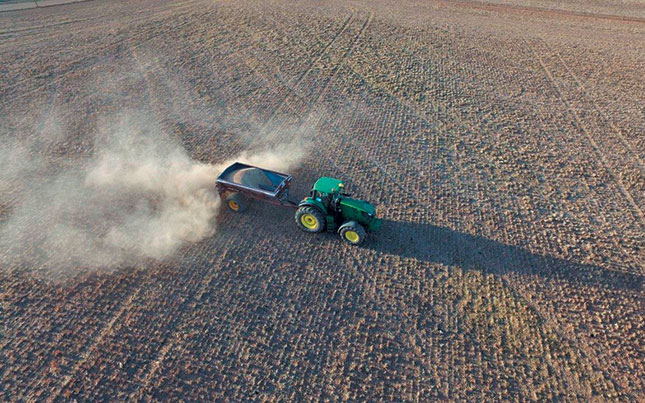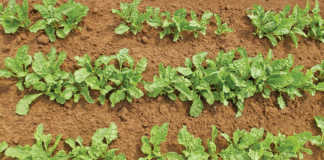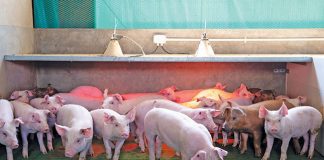
Photo: Nooitgedacht Trust
The 2017 theme for Agritechnica, the giant annual agricultural trade fair held in Hanover, Germany, was ‘Green Future – Smart Technology’.
To provide practical examples of smart farming, the organisers chose some producers who had excelled in this respect. One of these was South African grain farmer Gideon Albertyn, who has created a system that is sustainable in terms of ecology, economy and human resources.
Albertyn manages 4 100ha for his family’s business, the Nooitgedacht Trust near Bredasdorp in the Western Cape, and uses smart farming to boost his profits.
“This is one of the few ways we can achieve better yields in South Africa as we don’t get new, improved grain cultivars here,” he says.
“In this part of the country, we farm with very little rain and almost no topsoil, and we have to look for ways to grow better crops. Smart technology pays, as we can’t change the other factors affecting our farming.”
In common with most other farms in the district, the Nooitgedacht Trust practises mixed farming; its livestock operation includes between 4 500 to 5 000 breeding ewes, and 60 beef cows.
The cattle graze land unsuitable for arable production, while lucerne is grown for the sheep as a component of the arable rotation. Overall, the land is split 50/50 between the livestock and cash crop enterprises.
Small grains
“We plant about 2 100ha of small grain crops annually. This consists of 30% wheat, 30% barley and 20% canola, as well as triticale, oats and lupins,” explains Albertyn.
“We operate on an 11- or 12-year rotation that ends with five or six years of lucerne; this is used to support the livestock. Then we start preparing the lands again for small grains.”
Smart-farming technology is used throughout this cropping pattern; in some cases, it has been employed for as long as 10 years.
“We started with auto-guidance at the end of 2007 and yield mapping in 2008,” recalls Albertyn. “Swathing operations were switched to auto-guidance in 2011. In the same year, we started correcting nutrient imbalances in the soil according to grid analyses.”
In 2015, he switched to more accurate real-time kinematic (RTK) guidance, a technique for enhancing the precision of position data derived from satellites.
In 2017, he introduced variable-rate fertiliser application.
“In each case, I was looking for technology that would make our business more effective and contribute to better yields,” explains Albertyn. “Our main goal was always to simplify crop establishment and increase profit.”
Precision farming
When Albertyn began using auto-guidance in 2007, he used John Deere’s Greenstar system with a JD tractor and a Hardi trailed sprayer with 18m boom.
“We kept records of every litre of water going through the Hardi sprayer when we used the old foam markers. Comparing these with the volume used with the auto-guidance system, we found we’d used 8% to 10% less water, which means the same saving on chemical costs.
Our calculations during the first year suggested that automatic guidance would pay for itself in less than three years from the saving on chemical costs alone. In addition, we also got the benefits of 8% to 10% quicker spraying and similar savings on fuel costs and tractor hours,” he says.
Asked if smart technology has lived up to his expectations, Albertyn is quite adamant.
“Yes, for sure. I can see the difference from when we started years ago. The grid soil sampling and nutrient corrections have allowed us to achieve better yields over time, and also reduced our impact on the environment.”
The Agritechnica initiative is targeted at all those farmers who might have considered their output too small to justify investing in precision farming systems.
It is encouraging that a South African farmer has been chosen to draw attention to what can be achieved through smart farming.
Joe Spencer is the mechanisation editor of Farmer’s Weekly.











